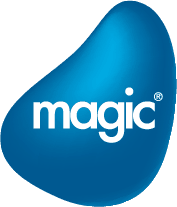In the early 2000s, a sudden spike in foodborne illness led to the FDA’s Food Safety Modernization Act (FSMA), which took effect in 2011. While this went a long way toward protecting consumers, recently signed new FDA regulations go even further.
These new rules call for companies that manufacture, process, pack or hold foods on the FDA’s Food Traceability List (FTL) to keep records of Critical Tracking Events (CTE) in a product’s journey from its point of origin to the end consumer. Companies must be in full compliance by January 20, 2026.
To help expedite these efforts, the FDA is calling for companies to take advantage of available technologies to enable greater traceability.
How Digital Traceability Saves Significant Time and Money
To comply, food manufacturers must assign a traceability lot code for any foods on the FTL list. Once created, these companies must send this lot code to every remaining link in the supply chain. As the FTL foods move through the supply chain, shippers must record when they ship the product, and the receiver must record when it arrives. This must include the date of the CTEs, quantity and unit measures, and reference document type and number.
Increased traceability is good for business, too. Here’s why: When there is a product recall, the manufacturer can quickly identify the affected lot codes and take whatever action is necessary to keep the recalled items from reaching consumers. In contrast, with manual processes and limited traceability, a manufacturer could find themselves in an unenviable position. They could be at risk of non-compliance, or they may need to pull all their products off the shelves rather than just the ones affected by the recall. And if consumers purchase recalled items before a company can remove them from shelves, that’s a lawsuit waiting to happen, and consumer trust in the brand may vanish.
In cases such as this, the savings of time and money are significant; in fact, the FDA estimates that increased traceability will cut tracing time by 83% and, better still, save $2.5 billion to $18.8 billion over the next 20 years.
What’s Involved in Going Digital?
If a company is serious about increasing traceability, digitization is the obvious answer. But this doesn’t mean a manufacturer has to rip and replace all its legacy machines. At FactoryEye, we’ve designed a smart manufacturing solution that allows manufacturers to keep their old equipment and upgrade it using cost-effective measures. Typically, this involves installing sensors on legacy machines, turning them into valuable data centers. And this data fuels traceability.
But just collecting data isn’t enough. Manufacturers need easy access to this data, whether in the case of a recall or when looking to optimize processes. For this to happen, manufacturers need to implement modern data architecture. Data lakes, such as those offered by Factory Eye, are the industry gold standard.
Data lakes are hosted in the cloud and can store massive amounts of data while keeping the original format intact. That means that data in all formats, structured, semi-structured, and structured, remain in the data lake. Then, the data lake turns these inputs into easy-to-understand dashboards.
For instance, imagine a peanut butter manufacturer realizes a month after production that one of its batches is contaminated. With FactoryEye, users can easily search for data from this production batch and see where the ingredients came from, what the production conditions were, and where it went in the supply chain next. Rather than spending hours searching for the data you need from different systems, the information is available quickly and reporting or alerts can be created in real time.
Due to the FDA’s new Era Food Safety rules, interoperability is essential. Interoperability allows companies at all levels of the supply chain to easily understand data from other links in a food’s supply chain. However, companies often struggle to integrate data from their own systems, much less export it in a way that outside companies can use it. Fortunately, data lakes are a big help here, too, because they can turn unstructured data into structured data while preserving the original data as well. This means companies can send data in formats that supply chain partners will be able to read and use.
You Can Afford Digitized Traceability
Many mid-size manufacturers have written off smart manufacturing as attractive but unaffordable. Until recently, that was often true; however, due to new technology, companies can now integrate their legacy systems with Industry 4.0 solutions rather than having to replace them. And they don’t have to wait years to see ROI. At FactoryEye, we’ve developed a sprint implementation strategy that breaks the journey to smart manufacturing into 90-day sprints, and manufacturers can see ROI from the beginning. In fact, the sprints are designed to fund the following sprints using the ROI from the previous ones.
The Time to Act is Now
Digital transformation has been on the horizon for food manufacturers for years. Now, they have a deadline. Needing to comply with the FDA traceability regulations by Jan. 2026, they can’t afford to delay. But mid-size manufacturers don’t need to fear that this means they will have to spend lots of money. With the right solution and implementation strategy, mid-size food manufacturers can comply with FSMA 204 while increasing their bottom line thanks to data-driven processes. In the process, you could be saving lives!
To learn more about FactoryEye’s smart manufacturing platform, contact us today.




